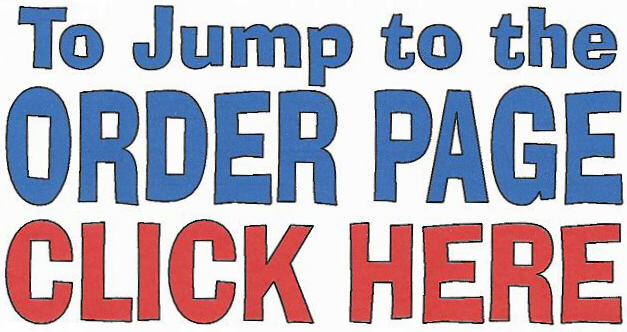|
|
|
Scope and Sequence of Subjects, Skills, Concepts, |
|||
|
BIBLE AND CHARACTER TRAINING
Vocabulary and Spelling: Vocabulary words from literature and content areas, Defining words in context, Latin and Greek roots, suffixes, and prefixes; Defining new words based on roots, Vocabulary word games, Individualized spelling lists, Spelling rules and applicable spelling words, Content-area spelling words, Commonly misspelled words, Spelling words correctly in context, Recognizing and correcting misspelled words, Practicing spelling words through written and tactile exercises and extension activities, Homonyms, Homophones, Homographs, Using spelling words in sentences, Spelling tests, Syllabication, Spelling games Writing: Summaries, Reaction paragraphs, Comparison and contrast writing, Character study, Dramatizing a story, Writing techniques, Using descriptive words, Note-taking, Rewriting passages, Types of paragraphs, Writing an essay, Combining sentences, Sentence building, Parts of a paragraph, Editing and improving a paragraph, Fundamentals of letter writing, Paraphrasing, Writing questions for an interview, Conducting an interview, Using the interview to write a short essay, Writing poetry and acrostics, Writing a biographical sketch, Editing writing, Prioritizing and organizing in writing, Research and writing, Building a synonym bank, Report writing, Outlines, Research papers, Interpretive writing, Journaling, Writing questions and riddles for games, News writing, Newspaper project, Writing announcements and advertisements, Content, Style, Mechanics, Format, Fiction writing Language/Grammar: Antonyms, Synonyms, Punctuation, Capitalization, Sentence structure, Types of sentences, Editing practice – correcting spelling, grammar, capitalization and punctuation errors in passages, Speech and Drama, Subjects (singular and plural, simple, complete, compound), Predicates (simple, complete, compound), Agreement, Nouns (singular, plural, compound, proper, common, abstract, concrete, collective, possessive), Pronouns (singular, plural, possessive; first, second, and third-person pronouns; personal, indefinite, reflexive, intensive, interrogative, demonstrative, relative, compound personal), Verbs (action, linking, helping, verb tenses, verb phrases, singular and plural verbs, transitive and intransitive, regular and irregular, verbals - gerunds, participles, infinitives), Adjectives (proper, positive, comparative, superlative, articles), Prepositions (prepositional phrases, objects of prepositions), Coordinating conjunctions, Adverbs, Double comparisons and negatives, Interjections, Irregular comparisons, Plurals, Contractions, Modifiers, Direct Objects, Complements, Indirect Objects, Predicate nominatives, Antecedents, Standard and nonstandard English, Dialect, Jargon, Fragments, Phrases, Clauses, Run-on sentences, Compound and polysyllabic words, Inverted order, Subject pronouns, Pronouns in the predicate, Pronoun cases – nominative, objective, possessive; Pronouns functioning as adjectives, Principal parts of verbs (present, present participle, past, past participle) Research and Study Skills: Dictionary, Encyclopedia, Thesaurus, Atlas, Almanac, Library awareness and skills, Dewey Decimal System, Arrangement of library books, Call numbers, Library cards, Using the index and table of contents, Readers' Guide to Periodical Literature
Science and technology in early American history, Canada, and the states of Virginia, Maryland, Massachusetts, Rhode Island, New Hampshire, New York, Connecticut, Delaware, Pennsylvania, North Carolina, New Jersey, South Carolina, and Georgia Insects – Insect Collection or Insect Notebook, Classification, Types of insects, Insect experiments and activities, Careers in entomology, Body parts and systems, Comparing and contrasting through observation, Growth and maturation, Mutualism, Parasites, Camouflage, Predators, Insect homes and habitats, Scientific method, Social and solitary insects, Insect lifestyles and habits, Characteristics and features, Hibernation, Instinct, Migration, Insecticides, Balancing nature Weather – Watching, charting, and recording the weather; Atmosphere, Air pressure, Ozone layer, Types of climate, Meteorology, Meteorologists, Weather experiments and activities, Specific heat, Water cycle, Evaporation, Condensation, Precipitation, Winds, Interpreting charts, Storms, Preparedness and emergency measures for storm conditions, Ocean currents, Measuring weather, Weather forecasting, Weather maps and symbols, Air masses, Fronts and pressure systems, Lightning and thunder, Properties of light, Fog, Smog, Dew, Frost, Weather oddities, Earth's elliptical orbit, Theories of formation of Earth, Greenhouse effect, Arguments in the scientific community, Using research and logic to formulate beliefs Simple Machines – Machines, Simple machines, Lever, Wheel and axle, Pulley, Inclined plane, Wedge, Screw; Building, observing, and experimenting with simple machines; Friction, Gears, Compound machines Inventors and Inventions - Inventing to meet a specific purpose, Edible inventions, Inventors and inventions in history, Inventions projects, activities, and experiments; Inventions time line Electricity – Uses of electricity, Electricity observations, experiments, and activities; Matter, Atoms, Nucleus, Protons, Neutrons, Electrons, Charges, Ions, Electricity in history, Static electricity, Conductors, Current electricity, Insulators, Amps, Batteries, Voltage, Open circuit, Resistance, Multimeter, Direct and alternating currents, Magnetism, Electricity production, Hydroelectricity, Nuclear power stations, Electricity through chemical action and solar cells, Transmitting electricity, Conserving electricity, Controlling electricity, Circuits, Electricity safety rules, Watts, Careers in electricity Mammals – Animal Kingdom, Classification system, Taxonomy; Orders, classes, and sub-classes of mammals; Characteristics of mammals, Habitats, Predators, Habits, Lifestyles, Evolution vs. creation, Observing mammals, Sketching mammals, Nature journals, Mammal projects – Mammal Marathon Game, Mammal Roll-Call! (highlighting features and habitats), Mammal Growth Chart, Mammal Tracks; Nocturnal, Extinction, Endangered mammals, Ecosystems, Experimenting with mammal habits and characteristics, Echolocation, Torpor, Hibernation, Mammal cooking activities, Mammal games and activities, Zoo Field trip, Food chain
|
|||

